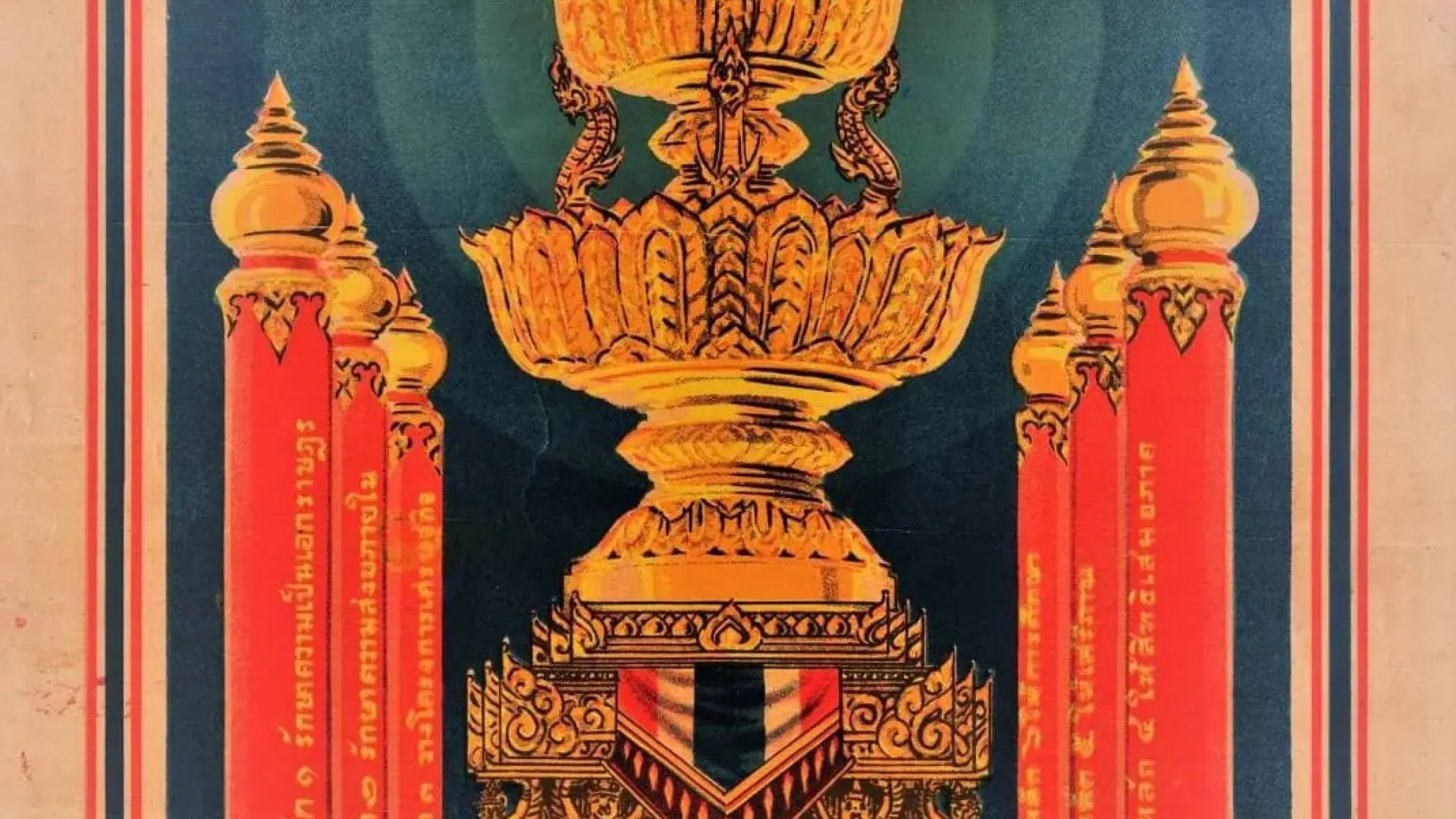Posters, or "placards," are considered a form of art that served as a powerful medium for public communication, comparable to newspapers or radio programs in the past century. Even though Siam had its first printing house established by the French missionary Louis Laneau since 1662 (during the reign of King Narai), it wasn’t until the reign of King Rama IV that printed media was disseminated to the public. This occurred when Dr. Dan Beach Bradley, also known as "Dr. Bradley," published the "Bangkok Recorder," Siam's first newspaper, in 1844. Around the same time, printed media in the form of posters began to be widely distributed. By the next century, around 1930, advancements in printing technology transformed black-and-white posters into eye-catching colored ones. Initially, these colored posters were popularly used for movie promotions, becoming valuable items sought after by collectors.
After the People's Party revolutionized the government in 1932, colored posters were used as propaganda tools to promote democratic ideas and the six principles of the People's Party. These posters were mainly based on the covers of various publications from that period, often presenting a modern image through the use of Art Deco art and architectural styles, as well as contemporary typography. They showcased the "ideal physique of Thai citizens during nation-building" through depictions of robust, muscular bodies in the "People's Party Art" style. Importantly, they celebrated the "constitutionalism" system by designing the "Constitution Pedestal" symbol alongside the "six principles" on the covers of various publications. One such example is the "Constitution of the Kingdom of Thailand" poster, a two-color print featuring a prominent golden Constitution Pedestal at the center, with the words "Constitution of the Kingdom of Thailand" printed in black on the constitution. Flanked by three lotus-topped pillars on each side, each pillar lists one of the six principles of the People's Party. Behind the pedestal, a large orange circle on a black background is presumed to symbolize the sun, indicating a new dawn for Thailand's political regime.
The widespread use of posters to support the ideology of the People's Party is directly linked to the establishment of the "Public Relations Department," which began in the post-1932 revolution era. The "Public Relations Department" was first established under the name "Advertising Division" on May 3, 1933, after Phraya Manopakorn Nitithada staged a coup to seize power from his own government and founded this department, drawing on propaganda concepts from the Nazi Party. However, just a month later, when the People's Party regained power, the department was elevated to the "Publicity Office" (December 9, 1933), then to the "Publicity Department" (July 5, 1940), and eventually to the "Public Relations Department" (March 8, 1952). Posters that featured images of the Constitution Tray and the six principles, as well as various publications, were partly the creative work of this department, alongside the popular production by private publishing houses to align with the wave of change. Moreover, after the People's Party government allowed for the election of representatives on November 7, 1937 (the second election in the country's history but the first in which people could directly elect their representatives), color printing technology played a significant role in the creation of campaign posters for the candidates. Notably, many campaign posters prominently featured the Constitution Pedestal symbol alongside the candidate's image. This reflects the political atmosphere of the People's Party era, where many citizens clearly placed their hopes in the new democratic regime.


